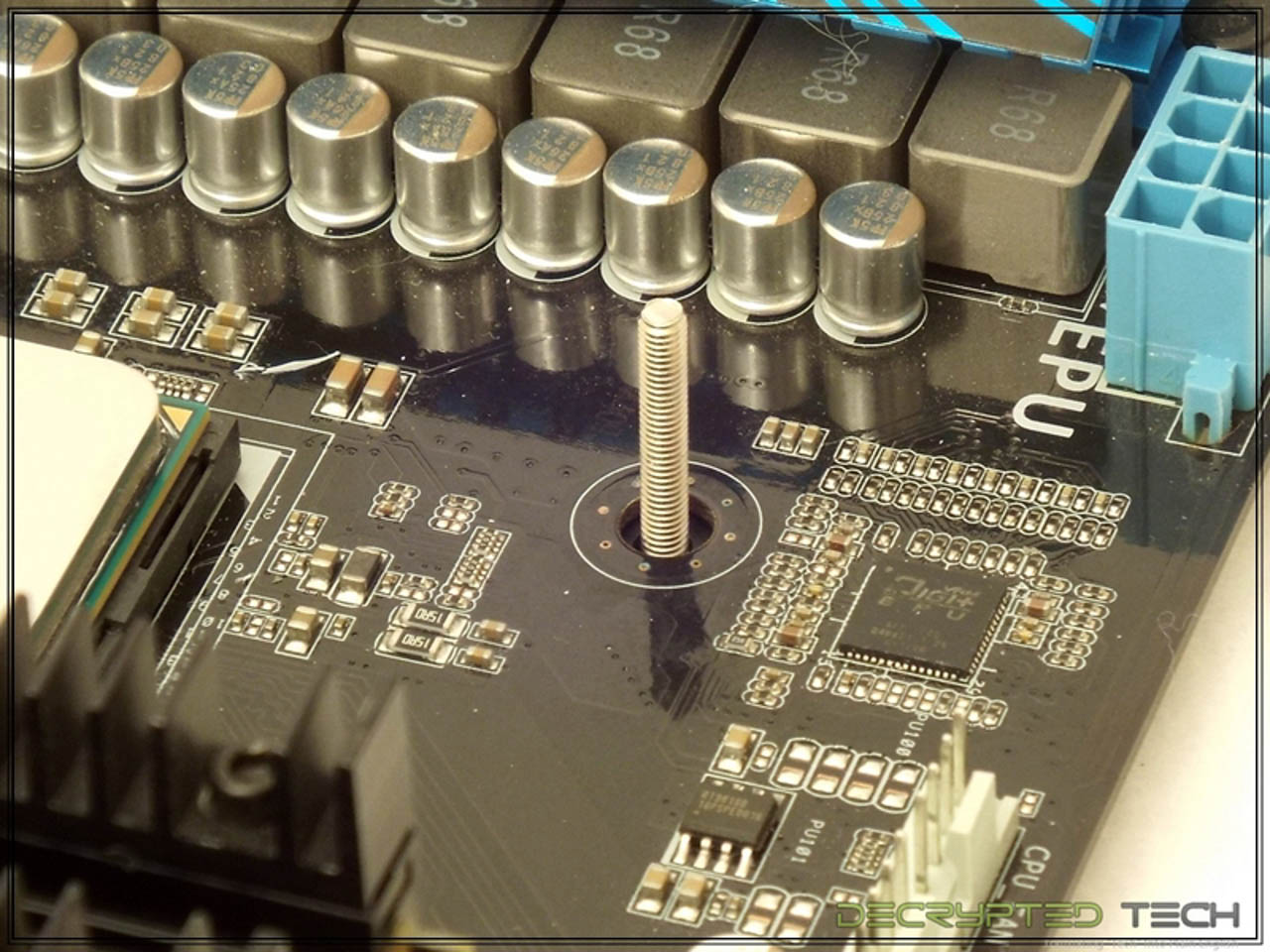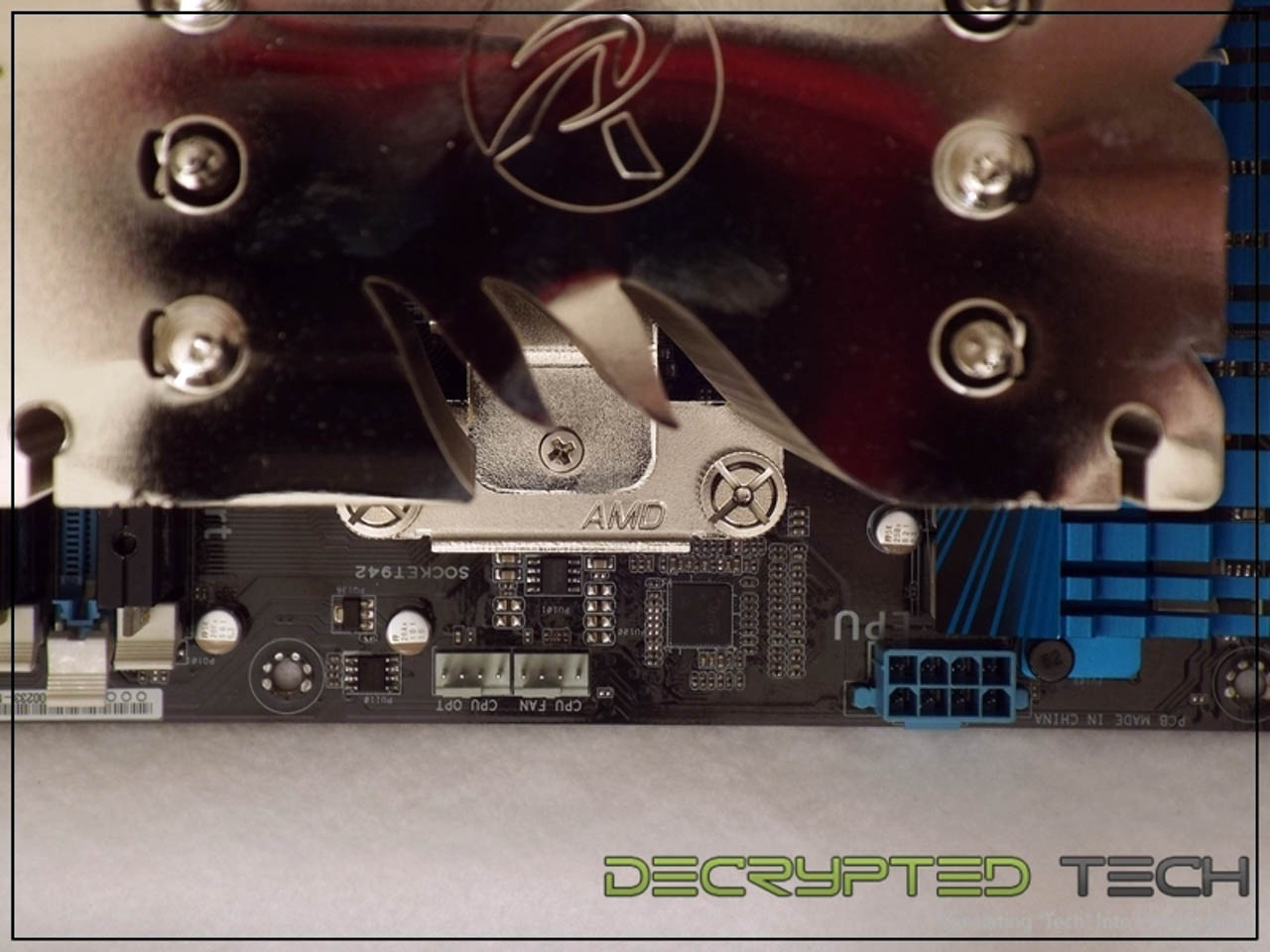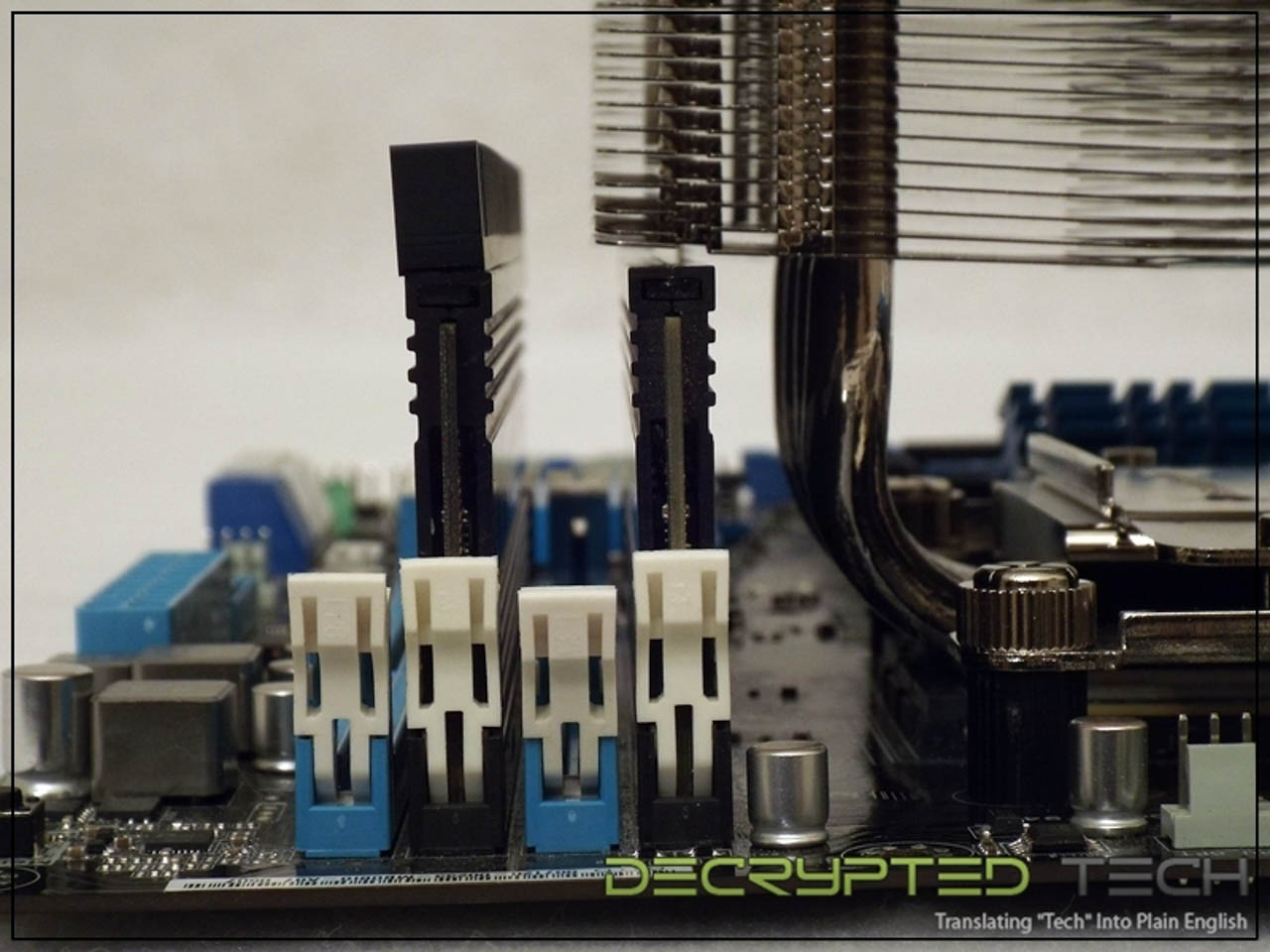Installation:
My test system uses the Asus M5A99FX Pro motherboard coupled with a Phenom II 1100T processor and 4GB of Corsair Dominator RAM. The combination of heatsinks on the this board and on the memory serve to test clearance issues on most coolers. If it will fit in this setup, chances are it will fit in yours but as always, your own research is strongly recommended.
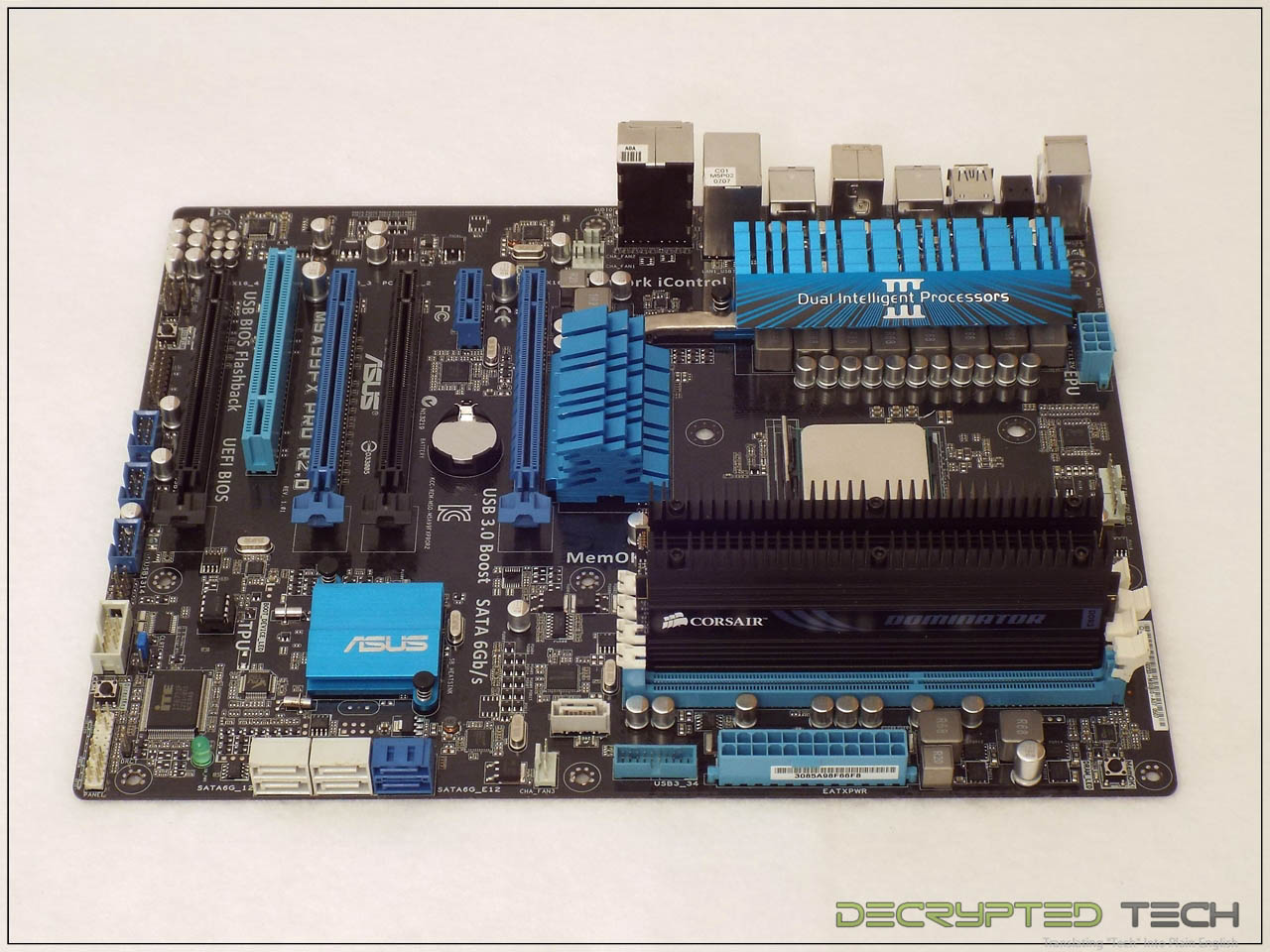
For the AMD setup, the holes in the universal backplate that have flats to hold the mounting screws in place are used.

Once the mounting screws are in place the backplate is set behind the motherboard with the screws in the holes for the stock retention plate. Another trend I’ve seen a lot of is the use of undersized screws like these. I am not a fan of this much slop between the mounting screw and the edge of the mounting hole. In a cooler like the Pallas the effect should be negligible but this happens even in coolers weighing in at 1.5kg. Something as simple as adding a small shoulder to the mounting nut to fill that hole would eliminate this problem.
The next step in installing the Themis EVO is to secure the mounting screws with the included mounting nuts, which also serve the function of spacers, setting the rest of the assembly at the correct height above the CPU socket. The nuts included with the Pallas are plastic, and one of them stripped during installation, though no tools were used. It did remain tight and seemed to cause no negative effects but it should be noted.
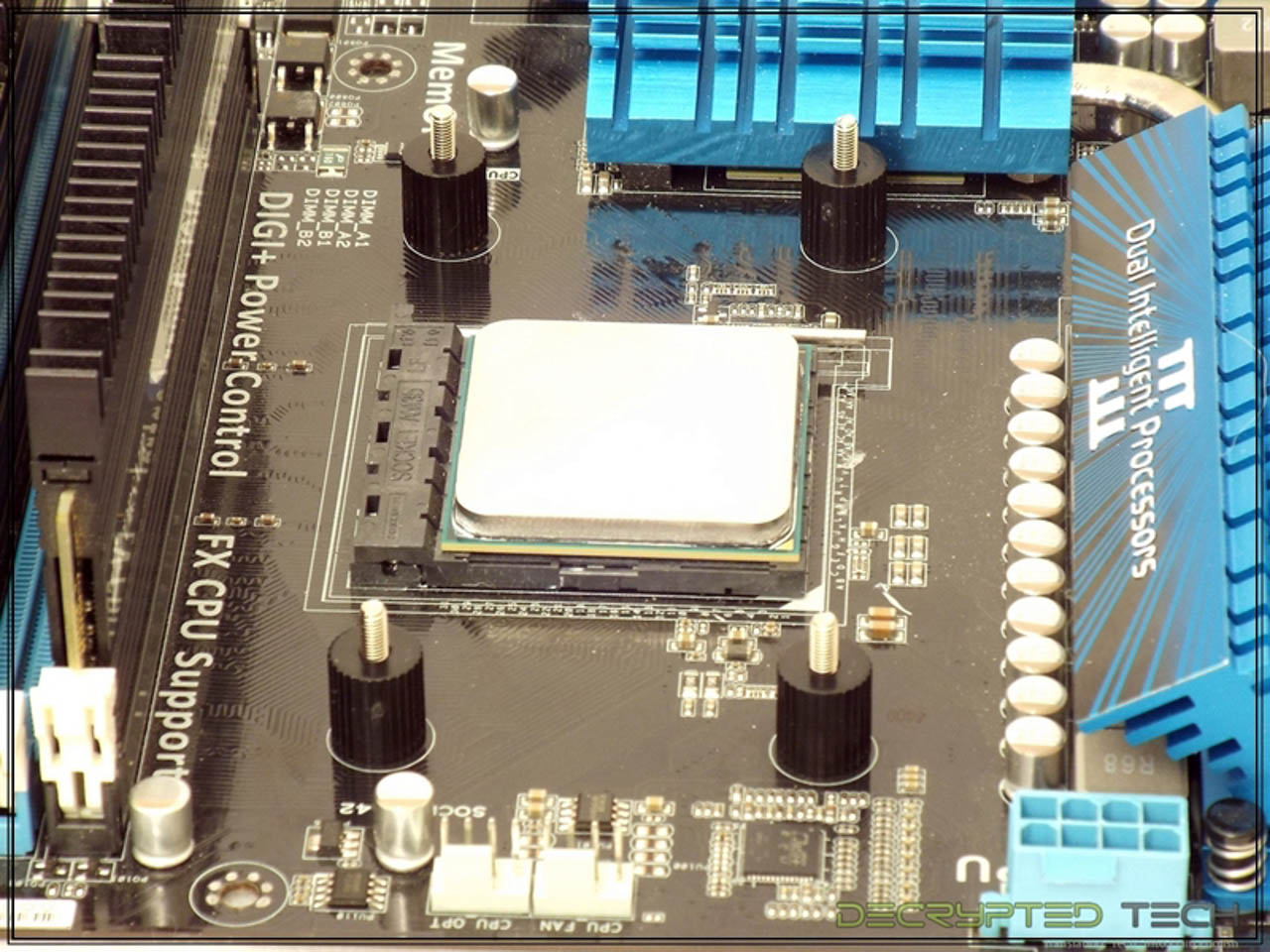
The AMD mounting bars are set in place over these spacer nuts next. I should note that these bars (both the AMD and Intel versions) are very thick metal and very sturdy. Seems an odd contrast to the plastic spacer nuts.
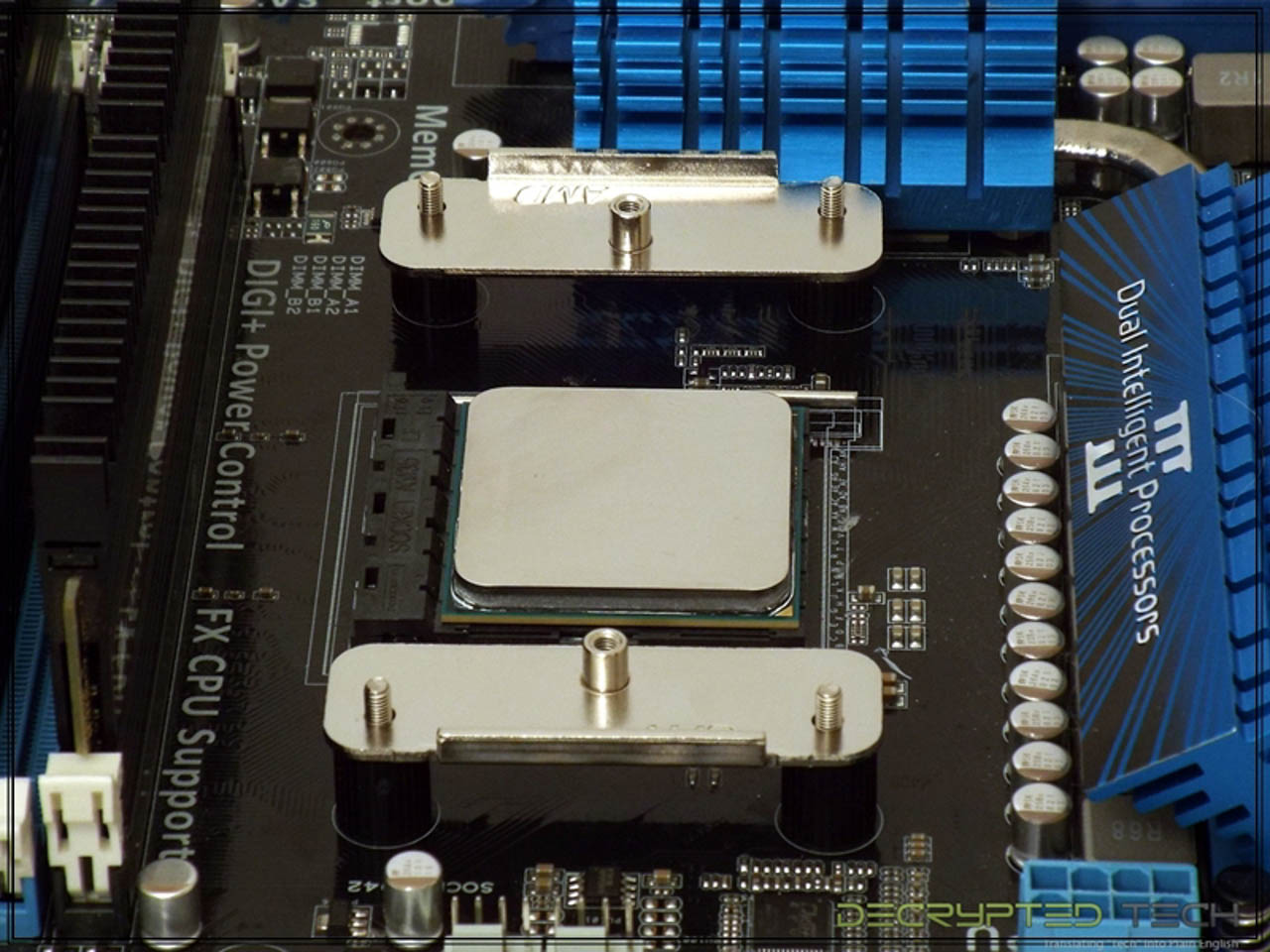
Finishing off the mount preparation are four thumb screws. These also have lines for a screwdriver if extra security is desired, though no mention is made of this in the instructions.
As with the Pallas, I was a little concerned about how I would get a screwdriver in to the final two mounting screws, but it seems those artistic shapes cut out of the sides of the fins aren’t purely for looks. Though (as we saw with the Pallas) the final mounting must be done without the fan, there was plenty of room to get my screwdriver where it needed to be.
AMD coolers have always had a disadvantage over their Intel counterparts in that they can only be mounted one of two ways. Without some kind of adapter the rectangular mounting setup inherent in AMD systems mandates that a cooler be placed in position A or 180 degrees around in position B. Intel’s square mount will often allow four different mounting options depending on rotation of the cooler.
In the case of the Themis Evo this caused a problem. With the center mounting bar running along the long axis of the rectangle (top to bottom), the tower itself has to run along the short axis (front to back). That put it squarely over the closest memory slot to the CPU socket, and it sits low enough that the Corsair Dominator memory we test with will not work with the heatsinks attached. Once removed to approximate lower-clearance RAM the cooler did fit over the module, though barely.
While I hate to see this kind of issue come up, specially after having no clearance issue at all with the Pallas cooler, the slot was still usable. I removed the heatsinks from the RAM and continued the installation. All that was left was the fan. Here is where the most serious issue came to light.
While the Themis Evo is high enough to clear the top of this closest RAM slot, thus making it usable if the memory is installed before the cooler, in our test board the memory ended up being exactly lined up with the fan mounting holes.
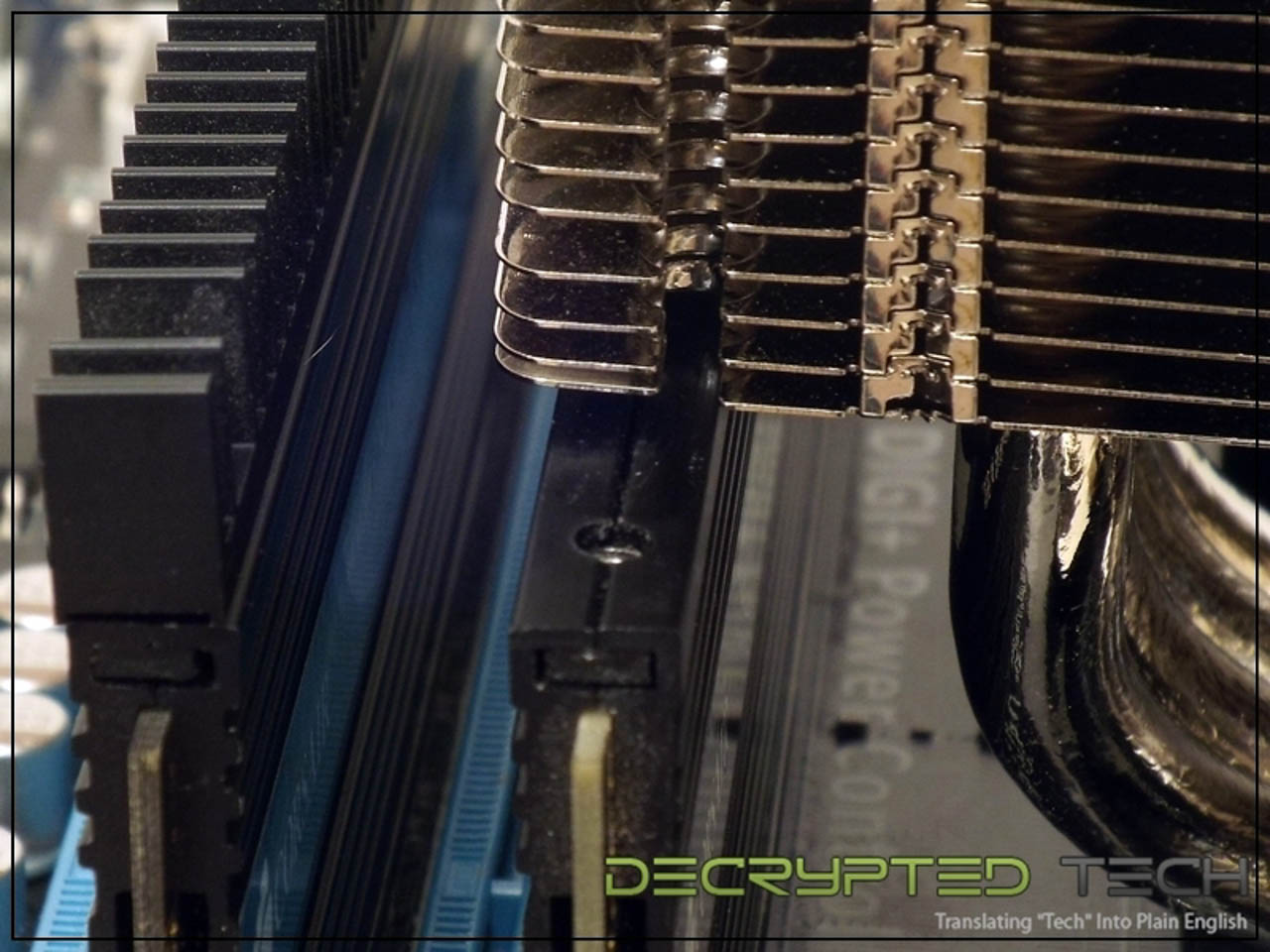 |
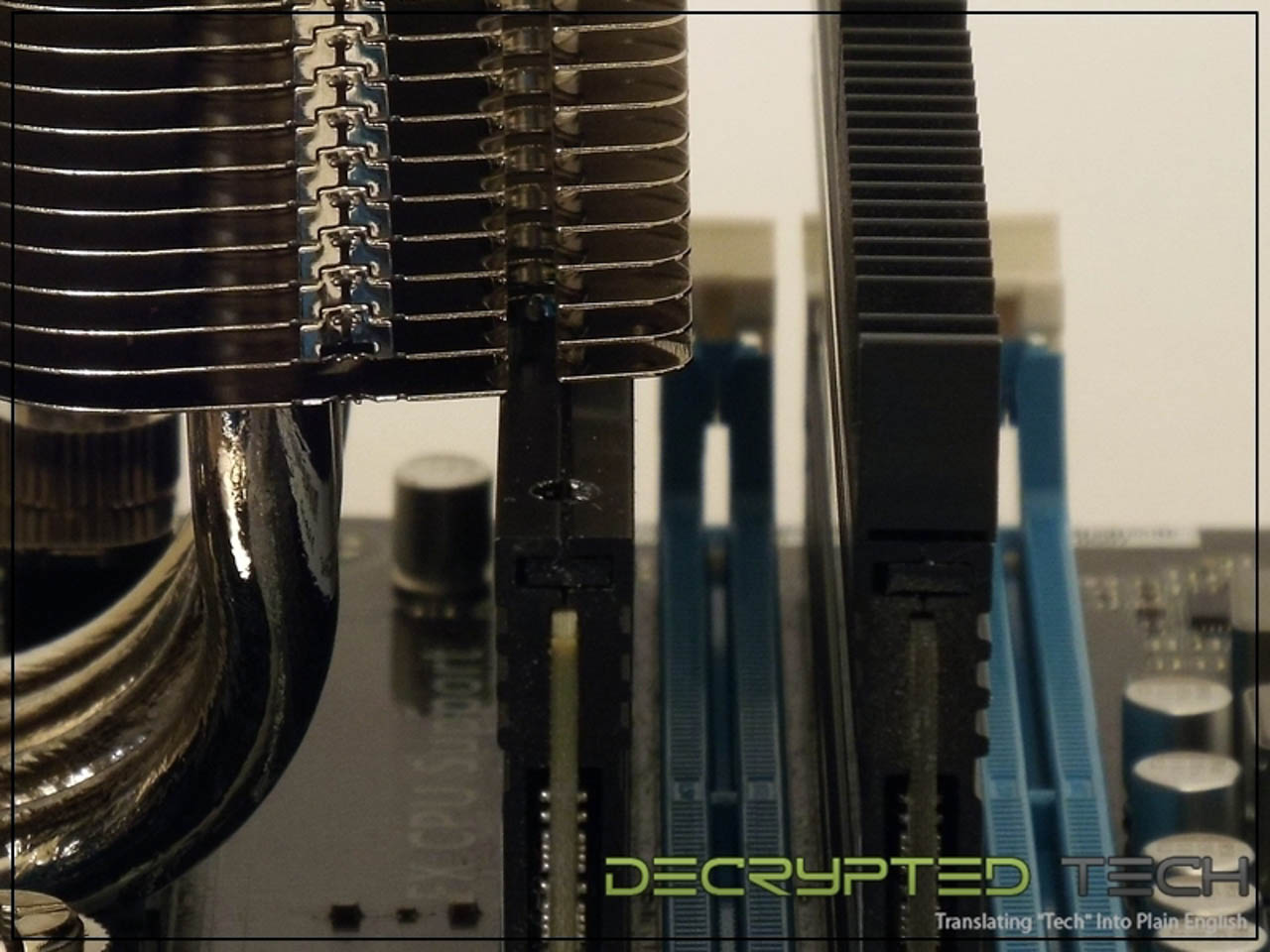 |
In this scenario it would seem that the fan cannot be attached to either side of the cooler. I thought that perhaps the bottom fan mounts could be slid in from the top and slid all the way down to the lower position but the edges of the fins and the tight tolerance of the holes makes this impossible. As soon as the tip of the mount disappeared inside the cooler it wouldn’t move any further by any means that wouldn’t damage the fins.
Since by following the instructions provided the cooler can’t be mounted with the fan in place and the fan evidently can’t be mounted with the cooler in place I had written off that first RAM slot as unusable after all, a serious mark against any cooler. Then it occurred to me that if the mounts were put in place on the cooler without the fan before the cooler was mounted to the board it would solve the issue. The fan wouldn’t be in the way of the final mounting screws and the memory wouldn’t be in the way of the fan mount side it would already be in place.
The instructions for this mounting setup need to be updated. As they stand, the user would likely end up with a single RAM slot unusable.
The Themis Evo cooler fully mounted:
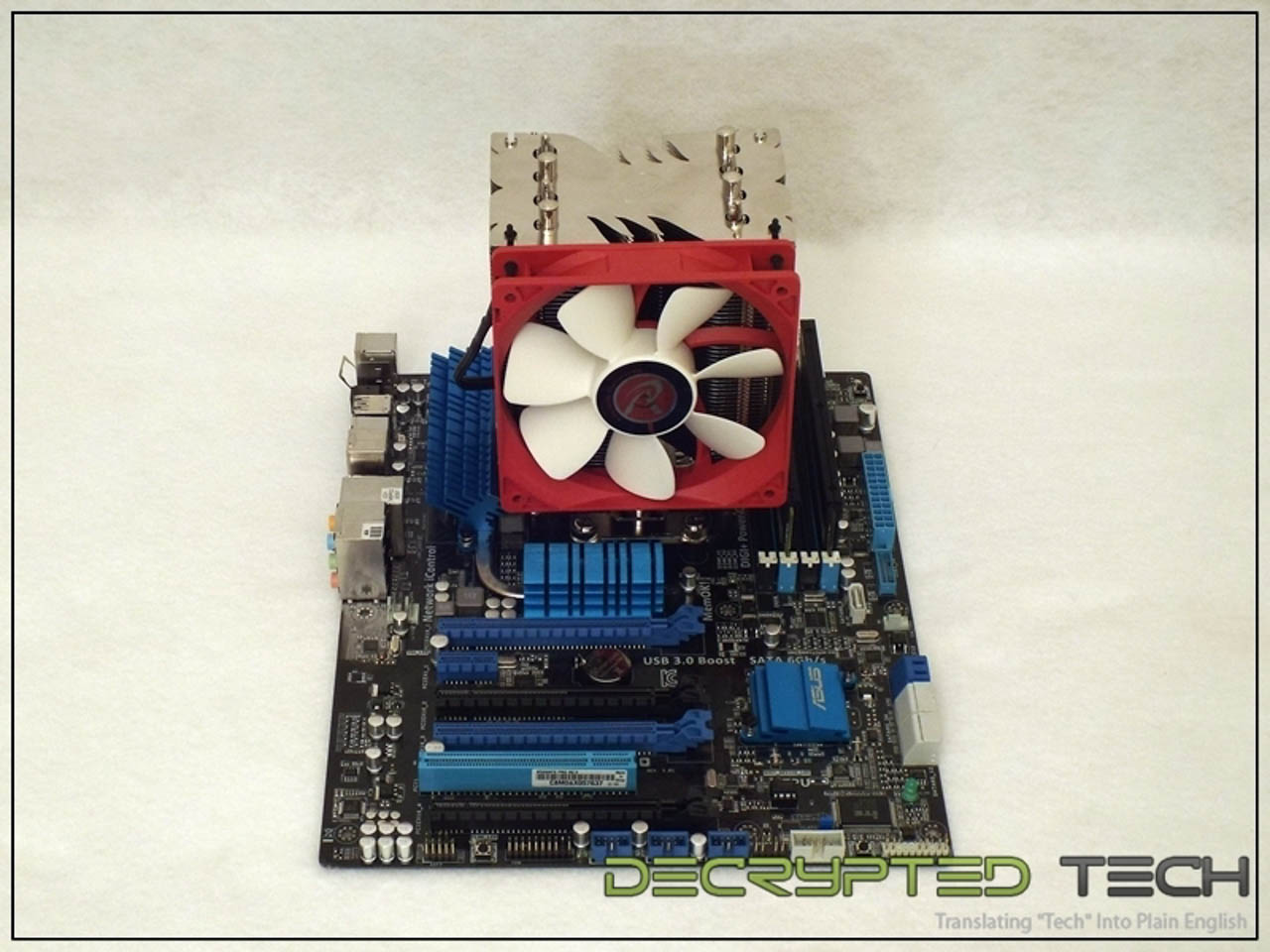 |
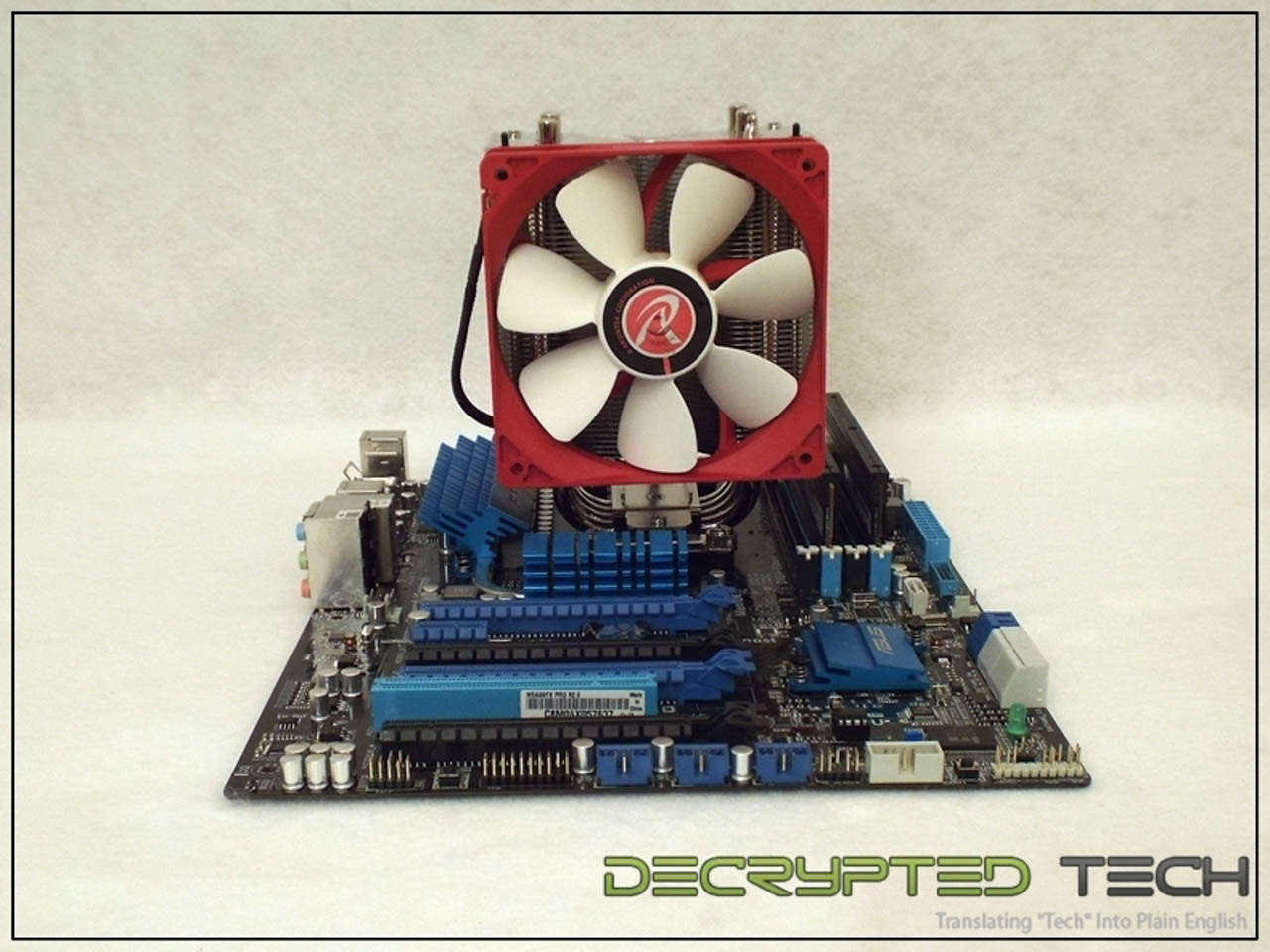 |
And mounted in place in our test case. While it takes up a lot more room than the low-profile Pallas cooler it easily clears the side panel of our full-tower case.
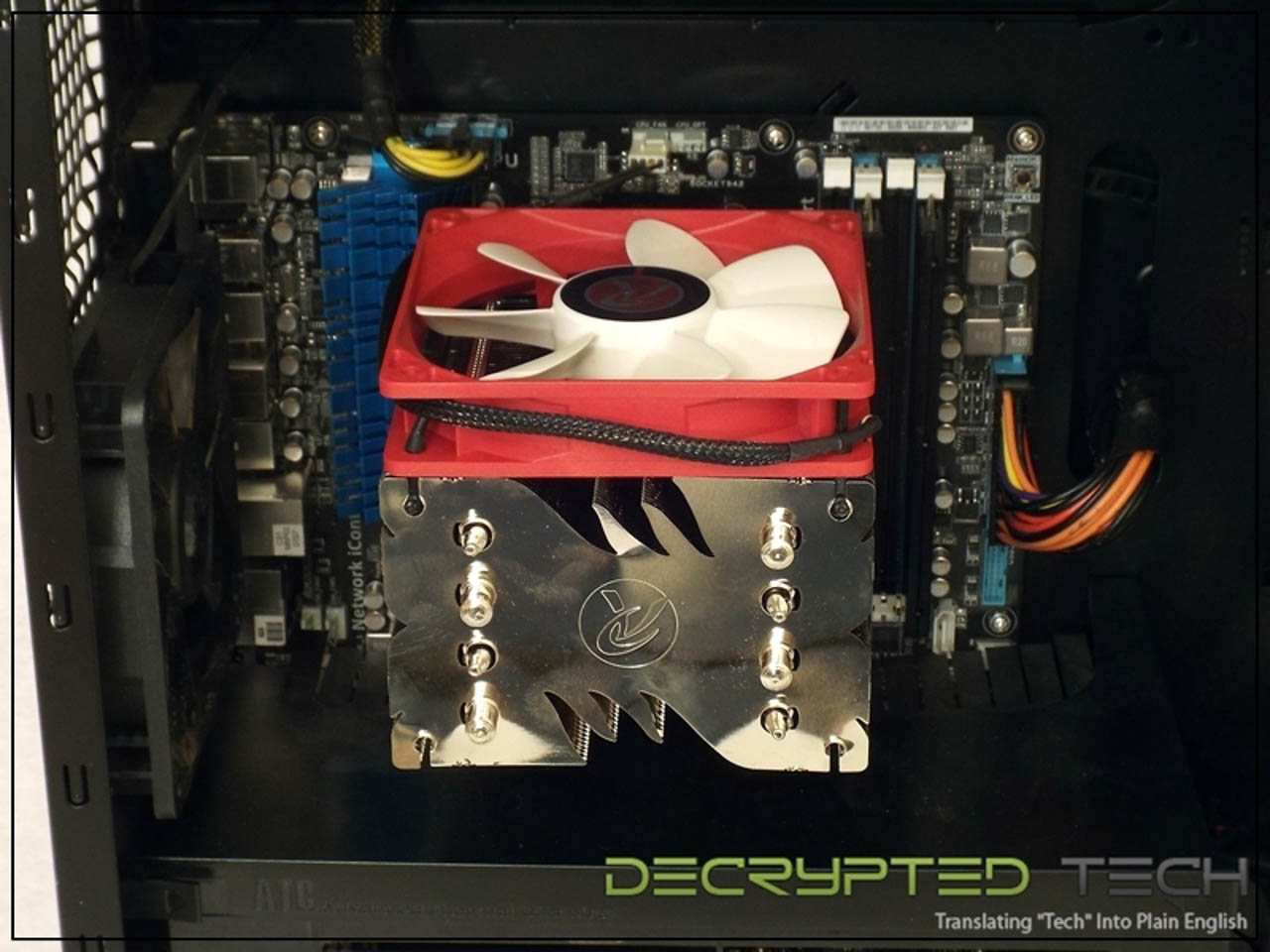 |
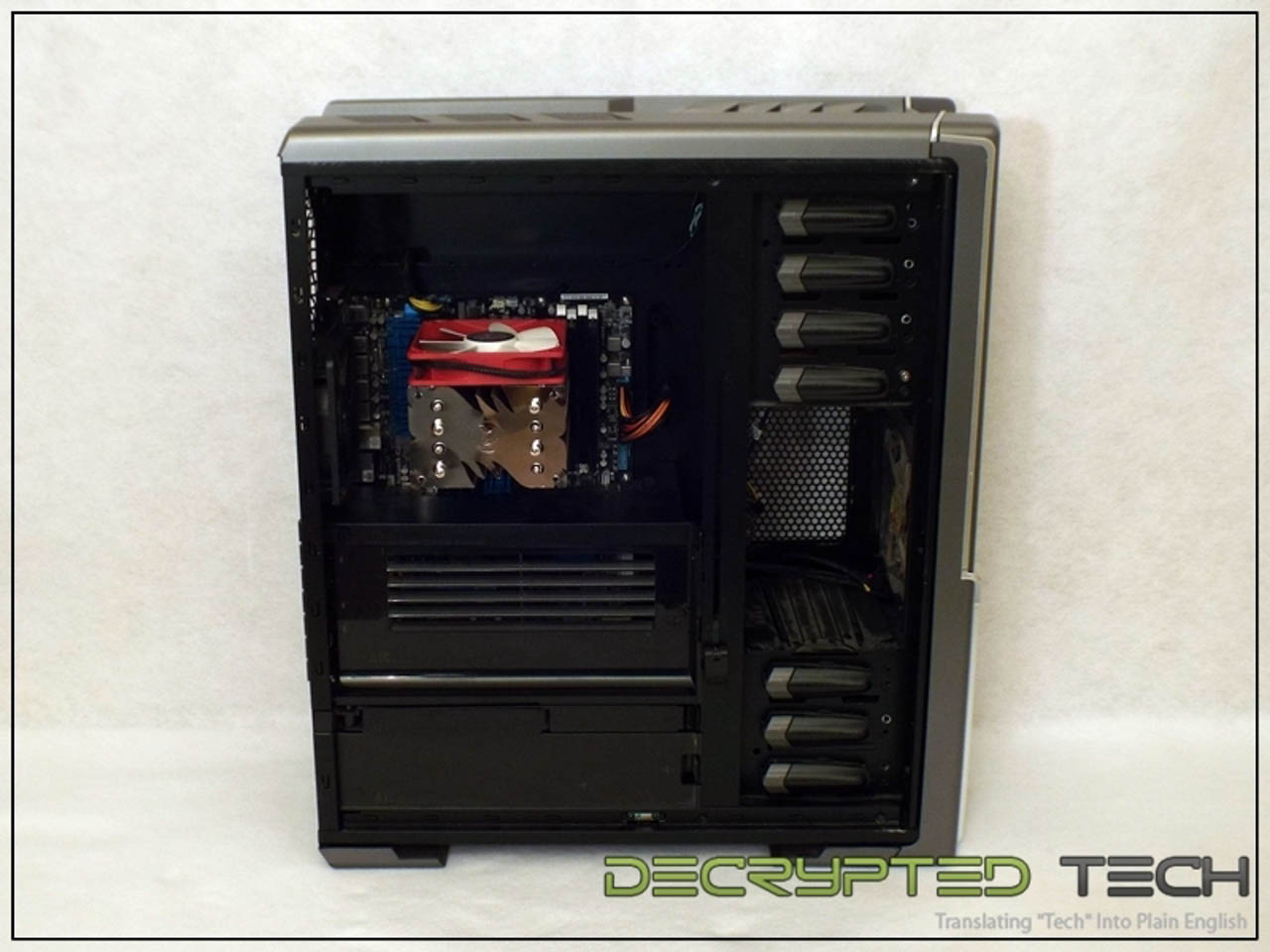 |

